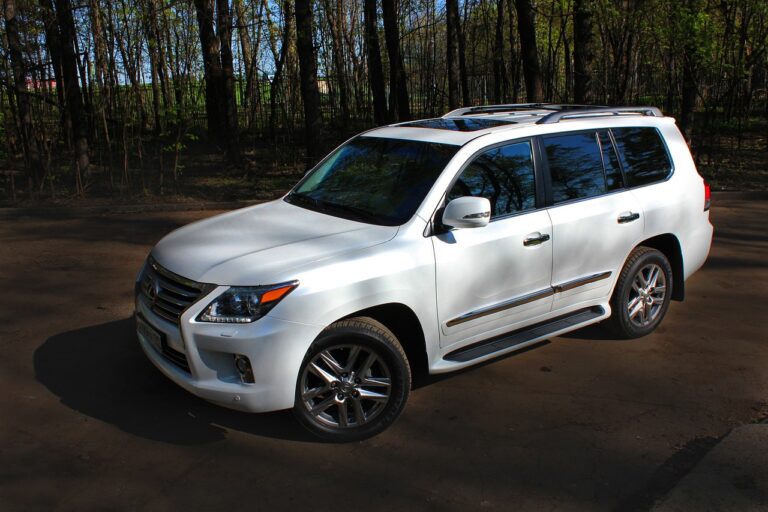Innovations in Vehicle HVAC Systems
lotus book 365, play exchange 99, all panel.com:Innovations in Vehicle HVAC Systems
When it comes to comfortable driving experiences, having an efficient HVAC (heating, ventilation, and air conditioning) system in your vehicle is crucial. Imagine driving in scorching hot weather or freezing cold temperatures without a properly functioning HVAC system it would be unbearable! Fortunately, advancements in technology have paved the way for innovative solutions in vehicle HVAC systems that not only enhance comfort but also improve overall driving experiences.
In this blog post, we’ll dive into some of the latest innovations in vehicle HVAC systems that are revolutionizing the way we control our vehicle’s climate. From smart sensors to energy-efficient solutions, these innovations are setting new benchmarks for comfort and efficiency on the road.
Smart Climate Control Systems
One of the most significant innovations in vehicle HVAC systems is the integration of smart climate control systems. These systems use sensors and advanced algorithms to monitor and adjust the temperature, airflow, and air quality inside the vehicle automatically. By continuously analyzing data such as exterior temperature, humidity levels, and sunlight exposure, smart climate control systems can optimize the HVAC settings to ensure a comfortable driving environment at all times.
Some vehicles even come equipped with AI-powered climate control systems that learn your preferences over time and tailor the settings accordingly. This level of personalization not only maximizes comfort but also minimizes energy consumption by avoiding unnecessary heating or cooling.
Energy-Efficient HVAC Components
Another key innovation in vehicle HVAC systems is the development of energy-efficient components that help reduce fuel consumption and emissions. Manufacturers are increasingly incorporating technologies such as variable-speed compressors, low-power consumption blowers, and thermal insulation materials to make HVAC systems more efficient.
For example, variable-speed compressors can adjust their output based on the cooling or heating needs of the vehicle, allowing for precise temperature control without wasting energy. Similarly, low-power consumption blowers can deliver the required airflow while consuming less electricity, contributing to overall energy savings.
Improved Air Filtration Systems
In recent years, there has been a growing emphasis on enhancing air quality inside vehicles, especially considering the impact of air pollution on health and well-being. To address this concern, manufacturers have been incorporating advanced air filtration systems into vehicle HVAC systems.
These filtration systems use high-efficiency particulate air (HEPA) filters to trap dust, pollen, bacteria, and other harmful particles, ensuring that the air circulating inside the vehicle is clean and allergen-free. Some vehicles even feature ionizers or UV light sterilization systems that further purify the air, creating a healthier and more comfortable driving environment.
Integration of Connectivity Features
As connectivity becomes increasingly important in vehicles, HVAC systems are also being integrated into smart infotainment systems. Drivers can now control their vehicle’s climate settings remotely through mobile apps or voice commands, making it easier to pre-cool or pre-heat the cabin before getting into the car.
Additionally, some vehicles offer location-based climate control features that automatically adjust the HVAC settings based on the vehicle’s GPS location. For example, if you’re approaching your home, the HVAC system can anticipate your arrival and start cooling or heating the cabin accordingly. These connectivity features not only enhance convenience but also improve energy efficiency by reducing idle time and optimizing HVAC usage.
Advanced Thermal Management Systems
Thermal management systems play a crucial role in regulating the temperature of electric vehicles (EVs) to maximize battery efficiency and longevity. Innovations in vehicle HVAC systems have led to the development of advanced thermal management solutions that can effectively cool or heat EV batteries to maintain optimal operating conditions.
Some EVs are equipped with liquid-cooled or liquid-heated thermal management systems that circulate coolant through the battery pack to prevent overheating or overcooling. These systems help prolong the life of the batteries and ensure consistent performance in varying weather conditions, ultimately enhancing the overall driving experience for EV owners.
Conclusion
Innovations in vehicle HVAC systems are transforming the way we experience comfort and convenience on the road. From smart climate control systems to energy-efficient components, these advancements are setting new standards for efficiency, air quality, and connectivity in vehicles. As technology continues to evolve, we can expect even more groundbreaking innovations in vehicle HVAC systems that enhance the driving experience for all motorists.
FAQs
Q: Are smart climate control systems worth the investment?
A: Smart climate control systems can significantly improve comfort and energy efficiency in your vehicle, making them a worthwhile investment for many drivers.
Q: How often should I replace the air filter in my vehicle’s HVAC system?
A: It’s recommended to replace the air filter in your vehicle’s HVAC system every 12,000 to 15,000 miles or as specified in your vehicle’s maintenance schedule.
Q: Can I retrofit my older vehicle with advanced HVAC features?
A: While it may be possible to retrofit certain advanced HVAC features into older vehicles, it’s best to consult with a professional technician to determine feasibility and compatibility.
Q: How can I improve the efficiency of my vehicle’s HVAC system?
A: To improve the efficiency of your vehicle’s HVAC system, you can regularly maintain the system, keep the air filters clean, and minimize idling to reduce energy consumption.
Q: Are there any safety considerations with advanced HVAC features in vehicles?
A: Advanced HVAC features in vehicles are designed with safety in mind, but it’s essential to follow manufacturer guidelines and consult with a professional technician for proper installation and maintenance.







